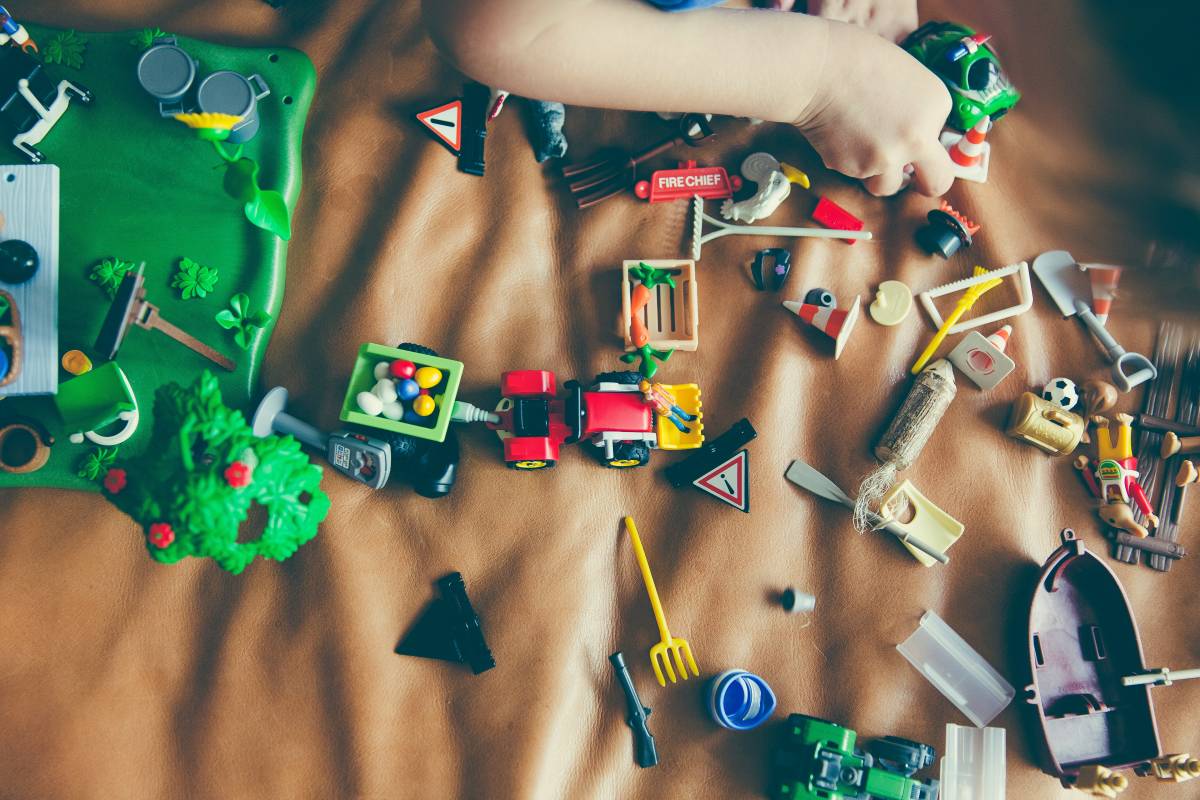
The history of the Indian toy industry stretches back to the birth of our nation itself. Manufactured all over the country, Indian toys reflect cultural diversity in the range of products manufactured. Local toys are manufactured from various raw materials such as plastic, wood, rubber, metals and textiles, with a big proportion of the businesses being SMEs. It is a labour-oriented industry based on master craftsmanship and creative designing.
Toys are an important part of childhood, as they aid in physiological, mental, and emotional development. The activities and control, which are required to understand and operate varying types of playthings. instil a sense of shape and colours, enhance cognitive abilities, and improve creativity. Traditional toys are also an important cultural asset as they depict ancient mythological stories and display the beliefs and traditions that exist among communities. Consumers are attracted to traditional toys, as they are a, means to preserve their heritage, and the craftsmen and artisans depend upon the production for their livelihood.
Handmade toys are made of simple local materials like wood, bamboo, cloth, metal sheets, wire, paper, cardboard, etc. Toymakers who live in cities and industrial areas make use of recycled waste materials such as old newspapers, discarded cartons, metal scraps, boxes and tins. Even discarded parts of machines and equipment are used very ingeniously. The use of recycled materials has no overhead cost and hence enables artisans to manufacture and sell toys at an unbelievably low price.
The Indian toy manufacturing industry is the livelihood of thousands of craftsmen and their families. This sector also plays an important role in generating employment opportunities for women and providing a regular source of income for rural households. In the toy industry, over 60 percent of toy factory workers are women.
The Indian toy retail market was valued at INR 16,000 Crore ($ 2.2 Bn) in 2020, which accounts for <1 percent of the global market. Currently, 85 percent of the domestic demand for toys is met through imports from China, Sri Lanka, Malaysia, Germany, and the US. In comparison to import volumes, India’s toy exports merely stand at INR 730 Crore ($ 100 Mn). This trade deficit is alarmingly large, given the potential of India to be self-reliant in an industry that is likely to grow at 10-15 percent against the global average of 5 percent. With Hon’ble Prime Minister Narendra Modi’s call for ‘Vocal for Local’, concerted efforts are being made to uplift the traditional toy industry in India to a global level.
To further boost the toy industry, the Government has undertaken the following initiatives:
National Action Plan-a comprehensive action plan to boost local manufacturing and incentivise toy and handicraft manufacturers in the country. The ‘National Action Plan’ will be implemented in collaboration with 14 Central Ministries, including Education, Textiles, Railways, Science and Technology, and Information and Broadcasting.
Toy Fair - In line with the national initiative to promote the domestic toy industry, the government organised a National Toy Fair from February 27 - March 03, 2021. The toy fair aimed to provide a platform to promote traditional, eco-friendly, and indigenous toys and to boost the Indian economy by supporting the local toy industry.
Toycathon - To promote toy manufacturing among domestic players, particularly rural entrepreneurs, a Common Service Centre (CSV) and a Special Purpose Vehicle (SPV) under the Ministry of Electronics and IT, joined forces with the All India Council for Technical Education (AICTE) to organise ‘Toycathon 2021’. This concept is a first-of-its-kind hackathon to develop indigenous toys and game highlighting India’s culture, history and mythology. It aims to invite students, teachers, start-ups, toy experts and professionals to innovate and submit feasibility assessments for local manufacturing of creative toys, games and concepts. With over 1.2 lakh registrants for the event and 17,000 ideas, 13,900 teams have been formed and can win a large number of prizes up to INR 50 lakh.
Toy Cluster Programme–90 percent of the Indian toy industry is unorganised, with more than 4,000 micro, small and medium enterprises operating across the country. Most toy manufacturers are in Delhi NCR, Maharashtra, Karnataka, Tamil Nadu and small clusters across other Indian states. To streamline this sector, the government announced the ‘Product Specific Industrial Cluster Development Programme’ in 2020 to build toy clusters in dedicated SEZs and help them become customised, self-sustained ecosystems catering to export markets. Moreover, the government is also providing incentives at each step, from setting up a plant and facilitating key resources at subsidised rates to incentivising running costs with the single goal of attracting investments and building export capacity.
Several state governments have swung into action and allocated dedicated areas for building toy cities and park clusters. Karnataka is creating India’s first toy cluster in Koppal district, designed with the view of housing an inclusive ecosystem of ancillary suppliers and industrial and social infrastructure.
Thus, with the numerous government initiatives, growing awareness around traditional toys and a countrywide push for local handicrafts, New India’s traditional toy industry is at the cusp of unprecedented growth. The industry is witnessing rapid transformation through a plethora of technological innovations and is likely to become a major contributor to the economy in the coming years. The growth of the traditional toy industry is truly a step towards the vision of a self-reliant New India!
- https://www.investindia.gov.in/team-india-blogs/indian-toy-fair-2021-impetus-make-india
- https://www.investindia.gov.in/team-india-blogs/toycathon-2021-highlight-indias-toy-industry-opportunity
- http://sersc.org/journals/index.php/IJDRBC/
- https://www.ethicaltoyprogram.org/en/
- https://www.ibef.org/blogs/national-action-plan-to-accelerate-india-s-toy-sector
- https://koppal-toycluster.com/about/
- https://toycathon.mic.gov.in/faqs.php



